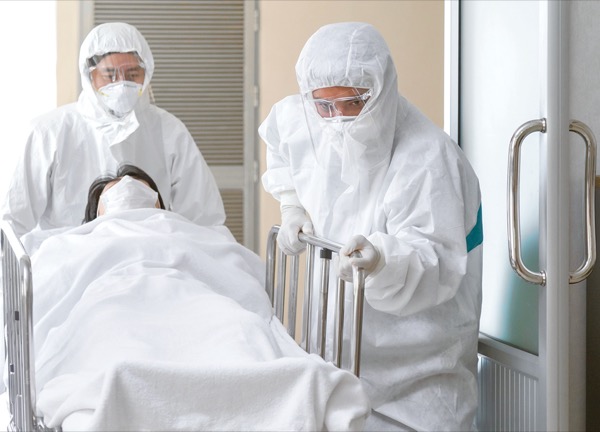DALLAS—During the initial peak of the COVID-19 pandemic in 2020, hospital-acquired infections occurred more frequently in patients treated for acute appendicitis at academic medical centers than those seen at nonacademic hospitals, according to new research presented at the 2022 annual meeting of the Surgical Infection Society.
In the early months of the pandemic, Brett Tracy, MD, an assistant professor of surgery at The Ohio State University Wexner Medical Center, in Columbus, and his colleagues noticed that a lot of patients were being transferred to their academic medical center (AMC). Colleagues at other institutions also were inundated by hospital transfers, he said.
“There appeared to be a lot of adherence to COVID-19–mitigating protocols, and appropriately so. But people were potentially being a little less fastidious about other things,” Dr. Tracy said.
To test their hypothesis that hospital-acquired infections (HAIs) were more prevalent at AMCs than at non-AMCs, Dr. Tracy and his team data mined a large prospectively collected archive, focusing on patients undergoing appendectomies before, during and after the implementation of pandemic-related operative restrictions.
During the study period, which ranged from October 2019 to four months after the lifting of each site’s pandemic operating restrictions, 1,003 patients underwent an appendectomy: 306 (30.5%) at non-AMCs and 697 (69.5%) at AMCs. Overall, 40 patients (3.9%) experienced an HAI. The proportion of HAIs was much higher in patients seen at an AMC than those at a non-AMC (nearly 5% vs. 2%, respectively). But this difference was observed only during peak pandemic restrictions, when the overall proportion of HAIs was about twice as high (7.7%), compared with around 3.6% and 3.7% for the pre- and post-peak periods.
“The HAI rate was significantly higher at AMCs, which substantiated our hypothesis. On further subgroup analysis, we found the difference was only significant during peak COVID, which again substantiated what we thought,” Dr. Tracy said.
This made sense to the researchers, since prior to the peak COVID-19 period, hospitals were focused on standard HAI prevention strategies. “We also found it interesting that there was no difference during the post-COVID period, and we thought this was potentially because people realized they needed to be more fastidious with things they perhaps hadn’t been so accountable for while taking COVID prevention measures.”
In addition, during the same early pandemic study period, other papers were reporting an increase in the number of patients with more advanced appendicitis at their initial presentation, Dr. Tracy said.
“We also found that people had a longer duration of symptoms before presenting. While we didn’t specifically seek to analyze that, it’s possible these patients had a worse intraabdominal process going on that attributed to their postoperative HAIs. And if you look at these studies, the severity of disease was significantly higher in patients presenting at AMCs for an appendectomy,” he said.
Dr. Tracy is unsure that the findings of his study will apply to another resurgence of COVID-19. “But there will be other epidemics and pandemics, and hopefully we can learn from this, the importance of tracking HAIs as well as continued vigilance with standard practices aimed at decreasing HAIs rather than just mitigation of the disease at hand,” he said.
Todd Costantini, MD, a professor of surgery at the University of California, San Diego, and the discussant for Dr. Tracy’s paper, noted that practice patterns changed significantly with the arrival of the pandemic.
“As acute care surgeons, we usually deal with nonelective surgery. But during COVID, people stopped coming to the hospital unless they were in really dire straits. For some standard acute care surgery problems like cholecystitis or appendicitis, things we would have normally treated operatively were deferred to nonoperative management,” he said.
Dr. Costantini considered Dr. Tracy’s paper an important documentation of the prevalence of HAIs at multiple centers during the peak period of the pandemic. He also observed that during that period, while everyone tried to make the best decisions they could about resource utilization, no one had a crystal ball.
“We had no idea what tomorrow or a week later, or a month from now, would look like. With resources strained across the hospital, operative care was de-emphasized, correctly or incorrectly, for some of these problems that could have been treated otherwise,” Dr. Costantini said.


